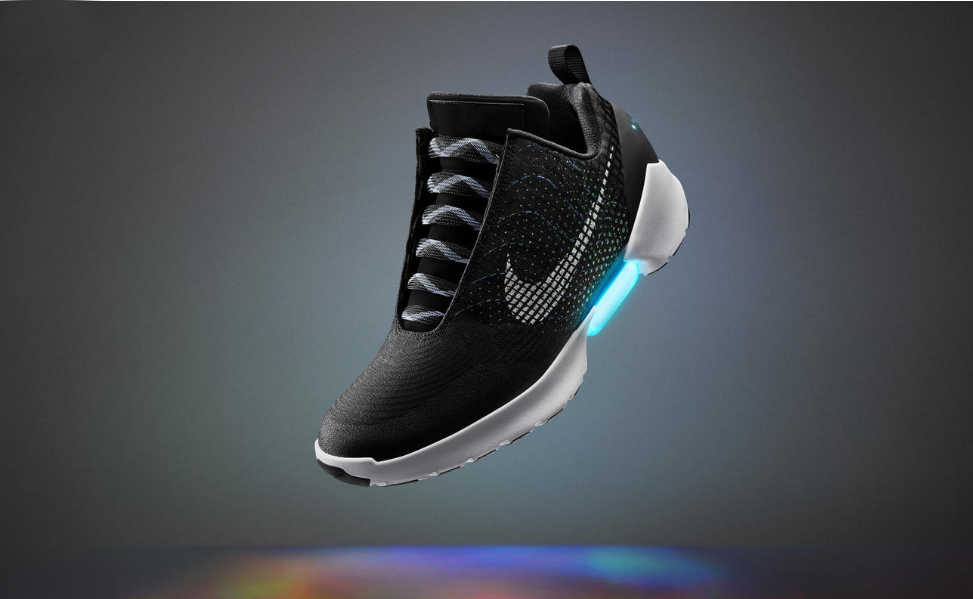
 PHOTO: NIKE
PHOTO: NIKENike PR Director Heidi Burgett tweeted on Tuesday that the HyperAdapt 1.0 will be available for "experience & purchase" from the 28th of November across selected Nike locations in the United States.
Nike's new ad features transgender athlete
HyperAdapt 1.0 will be available in the U.S. at select Nike retail locations. Appointments to experience & purchase begin 11.28.16. pic.twitter.com/t3YVLa8Rsl
— Heidi Burgett (@heidiburgett) September 20, 2016
How it works
HyperAdapt 1.0 feature an internal cable system made from fishing line along with a pressure sensor in the sole. Sensors in the shoe detect when it's being worn and a "lace engine" in the base of the sneaker then controls a system of nylon bands that tighten around the foot based on algorithmic calculations. The sneaker also features two buttons that lets wearers tighten or loosen laces.
 PHOTO: NIKE
PHOTO: NIKENike has been testing the shoes for years now. Finally, in March this year, the company announced a version actually intended for the mass market.
The shoes need to be charged
With LEDs in the heel that light up when the shoes are tightening along with all its internal electronics, it’s no surprise that the shoes need to be charged.
This mashup of Nike's ad featuring working women will give you goosebumps
It would normally take three hours for a full charge with each charge lasting about two weeks. Nike will provide a magnetic clip-on charger similar to that used by Apple for the Apple Watch with the shoes.
This article originally appeared on The Verge.


1736923233-0/fizza-(26)1736923233-0-165x106.webp)
1736922216-0/Untitled-design-(83)1736922216-0-165x106.webp)
1736920546-0/fizza-(25)1736920546-0-165x106.webp)












COMMENTS
Comments are moderated and generally will be posted if they are on-topic and not abusive.
For more information, please see our Comments FAQ